Opinion & Analysis
Wedge Guy: There’s no logic to iron fitting
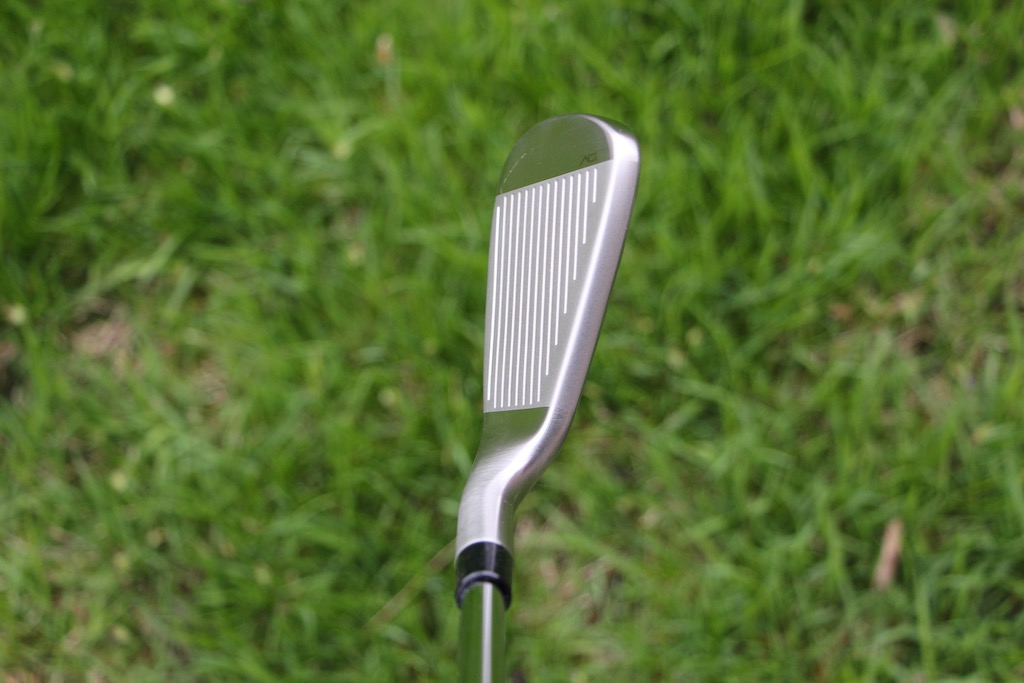
If you’ve read my blog for long, you know I’m not afraid to take on things in the golf equipment world that I think do not serve golfers’ best interests. My contrarian approach is based on a lifetime of playing this game at a pretty high level, and over forty years deeply immersed in the golf equipment industry. When I see things that I just do not believe are in golfers’ best interests as you try to hit better golf shots more often, I’ll call them out.
And while I’m a big believer in getting custom-fitted for golf clubs, when it comes to iron fittings, I think our industry has it all wrong.
Here’s why.
Let me begin by telling you I have recently completed a “secret shopper” process of experiencing the fitting protocol at three separate levels – one of the major custom fitting brands, one of the top retail brands’ fitting bay and one of the top equipment brands’ demo days at the club level. I think that gives me a pretty good perspective of what most golfers will experience in a custom fitting session for irons.
As you likely know, iron fittings are almost always centered on fitting the 6-iron by exploring a range of different head designs and shaft options. With reliance on launch monitor data, and almost exclusively hitting shots off of standard tight texture hitting mats, the process is purported to fine-tune the fitting parameters from which to build the golfer the most appropriate set of irons. It’s a nice goal, but I don’t think this process is the right way to get there.
In one experience, lie angle was never even addressed, which was quite puzzling.
In another, the fitter started by having me hit some shots with my 29-degree Hogan Ft. Worth 15 iron, then proclaimed my carry distance to be a full 10-12 yards shorter than I am 100 percent certain that it is. How did that happen?
And in still another, I was asked what iron model I was most drawn to, and then told that one “probably wasn’t right for me,” even before asking what I was seeking from a new set of irons.
How would he know that?
But in every one of these cases, the “fitting” process was centered on the 6-iron, which makes absolutely no sense to me. In more and more golfers’ bags, the 6-iron is the second or third longest iron — maybe even the longest iron. Very few golfers are carrying 4-irons anymore, and even fewer a 3-iron. More and more golfers are opting for hybrids once lofts get below the 5- or 6-iron.
So, where’s the logic of fitting one of the longer irons in your bag, then assuming that all the other irons will just fit right in? Your 6-iron is closer in loft to your 3-wood than it is to your 9-iron. And if you are playing the right tees for your strength profile, the middle of your iron set is the 8-iron or 9-iron, not the 6-iron.
Oh, and good luck asking to hit one of those higher lofts in the same iron model, with the same shaft as you just got “fitted” off the 6-iron.
In two of the secret shopper fittings, the fitter strongly suggested that I include the gap or “A” wedge in the set. I addressed this bad advice in a recent post.
So, as advanced as our fitting protocols have become, with the advent of launch monitors and related technologies, I think we have it all wrong when it comes to fitting irons. But will it change? Only if golfers force that change.
Maybe it’s time we did.
- LIKE462
- LEGIT123
- WOW15
- LOL16
- IDHT3
- FLOP15
- OB9
- SHANK110
19th Hole
Vincenzi’s 2024 RBC Heritage betting preview: Patrick Cantlay ready to get back inside winner’s circle

Just a two-hour drive from Augusta National, the PGA TOUR heads to Harbour Town Golf Links in Hilton Head Island, S.C. Hilton Head Island is a golfer’s paradise and Harbour Town is one of the most beautiful and scenic courses on the PGA TOUR.
Harbour Town Golf Links is a par-71 that measures 7,121 yards and features Bermuda grass greens. A Pete Dye design, the course is heavily tree lined and features small greens and many dog legs, protecting it from “bomb-and-gauge” type golfers.
The field is loaded this week with 69 golfers with no cut. Last year was quite possibly the best field in RBC Heritage history and the event this week is yet another designated event, meaning there is a $20 million prize pool.
Most of the big names on the PGA Tour will be in attendance this week with the exceptions of Hideki Matsuyama and Viktor Hovland. Additionally, Webb Simpson, Shane Lowry, Gary Woodland and Kevin Kisner have been granted sponsors exemptions.
Past Winners at Harbour Town
- 2023: Matt Fitzpatrick (-17)
- 2022: Jordan Spieth (-13)
- 2021: Stewart Cink (-19)
- 2020: Webb Simpson (-22)
- 2019: CT Pan (-12)
- 2018: Sotoshi Kodaira (-12)
- 2017: Wesley Bryan (-13)
- 2016: Branden Grace (-9)
- 2015: Jim Furyk (-18)
In this article and going forward, I’ll be using the Rabbit Hole by Betsperts Golf data engine to develop my custom model. If you want to build your own model or check out all of the detailed stats, you can sign up using promo code: MATTVIN for 25% off any subscription package (yearly is best value).
Key Stats For Harbour Town
Let’s take a look at key metrics for Harbour Town Golf Links to determine which golfers boast top marks in each category over their past 24 rounds.
Strokes Gained: Approach
Strokes Gained: Approach is exceedingly important this week. The greens at Harbour Town are about half the size of PGA TOUR average and feature the second-smallest greens on the tour. Typical of a Pete Dye design, golfers will pay the price for missed greens.
Total SG: Approach Over Past 24 Rounds
- Scottie Scheffler (+1.27)
- Tom Hoge (+1.27)
- Corey Conners (+1.16)
- Austin Eckroat (+0.95)
- Cameron Young (+0.93)
Good Drive %
The fairways at Harbour Town are tree lined and feature many dog legs. Bombers tend to struggle at the course because it forces layups and doesn’t allow long drivers to overpower it. Accuracy is far more important than power.
Good Drive % Over Past 24 Rounds
- Brice Garnett (88.8%)
- Shane Lowry (+87.2%)
- Akshay Bhatia (+86.0%)
- Si Woo Kim (+85.8%)
- Sepp Straka (+85.1%)
Strokes Gained: Total at Pete Dye Designs
Pete Dye specialists tend to play very well at Harbour Town. Si Woo Kim, Matt Kuchar, Jim Furyk and Webb Simpson are all Pete Dye specialists who have had great success here. It is likely we see some more specialists near the top of the leaderboard this week.
SG: TOT Pete Dye per round over past 36 rounds:
- Xander Schauffele (+2.27)
- Scottie Scheffler (+2.24)
- Ludvig Aberg (+2.11)
- Brian Harman (+1.89)
- Sungjae Im (+1.58)
4. Strokes Gained: Short Game (Bermuda)
Strokes Gained: Short Game factors in both around the green and putting. With many green-side bunkers and tricky green complexes, both statistics will be important. Past winners — such as Jim Furyk, Wes Bryan and Webb Simpson — highlight how crucial the short game skill set is around Harbour Town.
SG: SG Over Past 24 Rounds
- Jordan Spieth (+1.11)
- Taylor Moore (+1.02)
- Wyndham Clark (+0.98)
- Mackenzie Hughes (+0.86)
- Andrew Putnam (+0.83)
5. Greens in Regulation %
The recipe for success at Harbour Town Golf Links is hitting fairways and greens. Missing either will prove to be consequential — golfers must be in total control of the ball to win.
Greens in Regulation % over past 24 rounds:
- Brice Garnett (+75.0%)
- Scottie Scheffler (+69.9%)
- Corey Conners (+69.0%)
- Shane Lowry (+68.3%)
- Patrick Rodgers (+67.6%)
6. Course History
Harbour Town is a course where players who have strong past results at the course always tend to pop up.
Course History over past 24 rounds:
- Patrick Cantlay (+2.34)
- Cam Davis (+2.05)
- J.T. Poston (+1.69)
- Justin Rose (+1.68)
- Tommy Fleetwood (+1.59)
The RBC Heritage Model Rankings
Below, I’ve compiled overall model rankings using a combination of the five key statistical categories previously discussed — SG: Approach (24%), Good Drives (20%), SG: SG (14%), SG: Pete Dye (14%), GIR (14%), and Course History (14%)
- Shane Lowry
- Russell Henley
- Scottie Scheffler
- Xander Schauffele
- Corey Conners
- Wyndham Clark
- Christiaan Bezuidenhout
- Matt Fitzpatrick
- Cameron Young
- Ludvig Aberg
2024 RBC Heritage Picks
Patrick Cantlay +2000 (FanDuel)
With the exception of Scottie Scheffler, the PGA Tour has yet to have any of their star players show peak form during the 2024 season. Last week, Patrick Cantlay, who I believe is a top-5 players on the PGA Tour, took one step closer to regaining the form that’s helped him win eight events on Tour since 2017.
Cantlay limped into the Masters in poor form, but figured it out at Augusta National, finishing in a tie for 20th and ranking 17th for the week in Strokes Gained: Ball Striking. The former FedEx Cup champion will now head to one of his favorite golf courses in Harbour Town, where he’s had immaculate results over the years. In his six trips to the course, he’s only finished worse than 7th one time. The other finishes include three third places (2017, 2019, 2023) and one runner-up finish (2022). In his past 36 rounds at Harbour Town, Cantlay ranks 1st in Strokes Gained: Total per round at the course by a wide margin (+2.36).
Cantlay is winless since the 2022 BMW Championship, which is far too long for a player of his caliber. With signs pointing to the 32-year-old returning to form, a “signature event” at Harbour Town is just what he needs to get back on the winning track.
Tommy Fleetwood +3000 (FanDuel)
I truly believe Tommy Fleetwood will figure out a way to win on American soil in 2024. It’s certainly been a bugaboo for him throughout his career, but he is simply too talented to go another season without winning a PGA Tour event.
At last week’s Masters Tournament, Fleetwood made a Sunday charge and ended up finishing T3 in the event, which was his best ever finish at The Masters. For the week, the Englishman ranked 8th in the field in Strokes Gained: Approach, 10th in Strokes Gained: Ball Striking and 16th in Strokes Gained: Putting.
Harbour Town is a perfect layout for Fleetwood, and he’s had relative success at this Pete Dye design in the past. In his four trips to the course, he’s finished inside of the top 25 three times, with his best finish, T10, coming in 2022. The course is pretty short and can’t be overpowered, which gives an advantage to more accurate players such as Fleetwood. Tommy ranks 8th in the field in Good Drive % and should be able to plot his way along this golf course.
The win is coming for Tommy lad. I believe there’s a chance this treasure of a golf course may be the perfect one for him to finally break through on Tour.
Cameron Young +3300 (FanDuel)
Cameron Young had a solid Masters Tournament last week, which is exactly what I’m looking for in players who I anticipate playing well this week at the RBC Heritage. He finished in a tie for 9th, but never felt the pressure of contending in the event. For the week, Young ranked 6th in Strokes Gained: Off the Tee and 6th in Strokes Gained: Ball Striking.
Despite being one of the longest players off the tee on the PGA Tour, Young has actually played some really good golf on shorter tracks. He finished T3 at Harbour Town in 2023 and ranks 20th in the field in Good Drive% and 16th in Greens in Regulation in his past 24 rounds. He also has strong finishes at other shorter courses that can take driver out of a players hand such as Copperhead and PGA National.
Young is simply one of the best players on the PGA Tour in 2024, and I strongly believe has what it takes to win a PGA Tour event in the very near future.
Corey Conners +5500 (FanDuel)
Corey Conners has had a disappointing year thus far on the PGA Tour, but absolutely loves Harbour Town.
At last week’s Masters Tournament, the Canadian finished T30 but ranked 20th in the field in Strokes Gained: Approach. In his past 24 rounds, Conners ranks 3rd in the field in Strokes Gained: Approach, 3rd in Greens in Regulation % and 24th in Good Drive %.
In Conners’ last four trips to Harbour Town, his worst finish was T31, last season. He finished T4 in 2021, T12 in 2022 and ranks 8th in Strokes Gained: Total at the course over his past 36 rounds.
Conners hasn’t been contending, but his recent finishes have been encouraging as he has finished in the top-25 in each of his past three starts prior to The Masters, including an impressive T13 at The PLAYERS. His recent improvement in ball striking as well as his suitability for Harbour Town makes Conners a high upside bet this week.
Shane Lowry (+7500) (FanDuel)
When these odds were posted after Lowry was announced in the field, I have to admit I was pretty stunned. Despite not offering much win equity on the PGA Tour over the last handful of years, Shane Lowry is still a top caliber player who has the ability to rise to the top of a signature event.
Lowry struggled to score at The Masters last week, but he actually hit the ball really well. The Irishman ranked 1st for Strokes Gained: Approach on the week and 7th in Strokes Gained: Ball Striking. As usual, it was the putter that let him down, as he ranked 60th in the field in Strokes Gained: Putting.
Harbour Town is most definitely one of Lowry’s favorite courses on the PGA Tour. In his six starts there, he’s finished in the top 10 three times, including third twice. Lowry is sensational at Pete Dye designs and ranks 7th in Strokes Gained: Total in his past 36 rounds on Dye tracks.
Lowry is perfect for Harbour Town. In his past 24 rounds, he ranks 5th in Strokes Gained: Approach, 2nd in Good Drive% and 5th in Green in Regulation %. If he figures it out on the greens, Shane could have his first win in America since 2015.
Lucas Glover +12000 (FanDuel)
This is one of my weekly “bet the number” plays as I strongly believe the odds are just too long for a player of Glover’s caliber. The odds have been too long on Glover for a few weeks now, but this is the first event that I can get behind the veteran being able to actually contend at.
Glover is quietly playing good golf and returning to the form he had after the understandable regression after his two massive victories at the end of 2023. He finished T20 at The Masters, which was his best ever finish at Augusta National. For the week, Lucas ranked 18th for Strokes Gained: Approach and 20th in Strokes Gained: Ball Striking.
Over his past 24 rounds, Glover ranks 9th in Strokes Gained: Approach and 13th in Good Drive %. Harbour Town is a short course that the 44-year-old will be able to keep up with the top players on Tour off the tee. He’s played the course more than 20 times, with mixed results. His best finishes at Harbour Town include a T7 in 2008, but recently has a finish of T21 in 2020.
Glover has proven he can contend with the stars of the Tour on any given week, and this number is flat out disrespectful.
- LIKE26
- LEGIT5
- WOW1
- LOL1
- IDHT1
- FLOP2
- OB0
- SHANK1
19th Hole
Vincenzi: The 6 biggest takeaways from the 2024 Masters
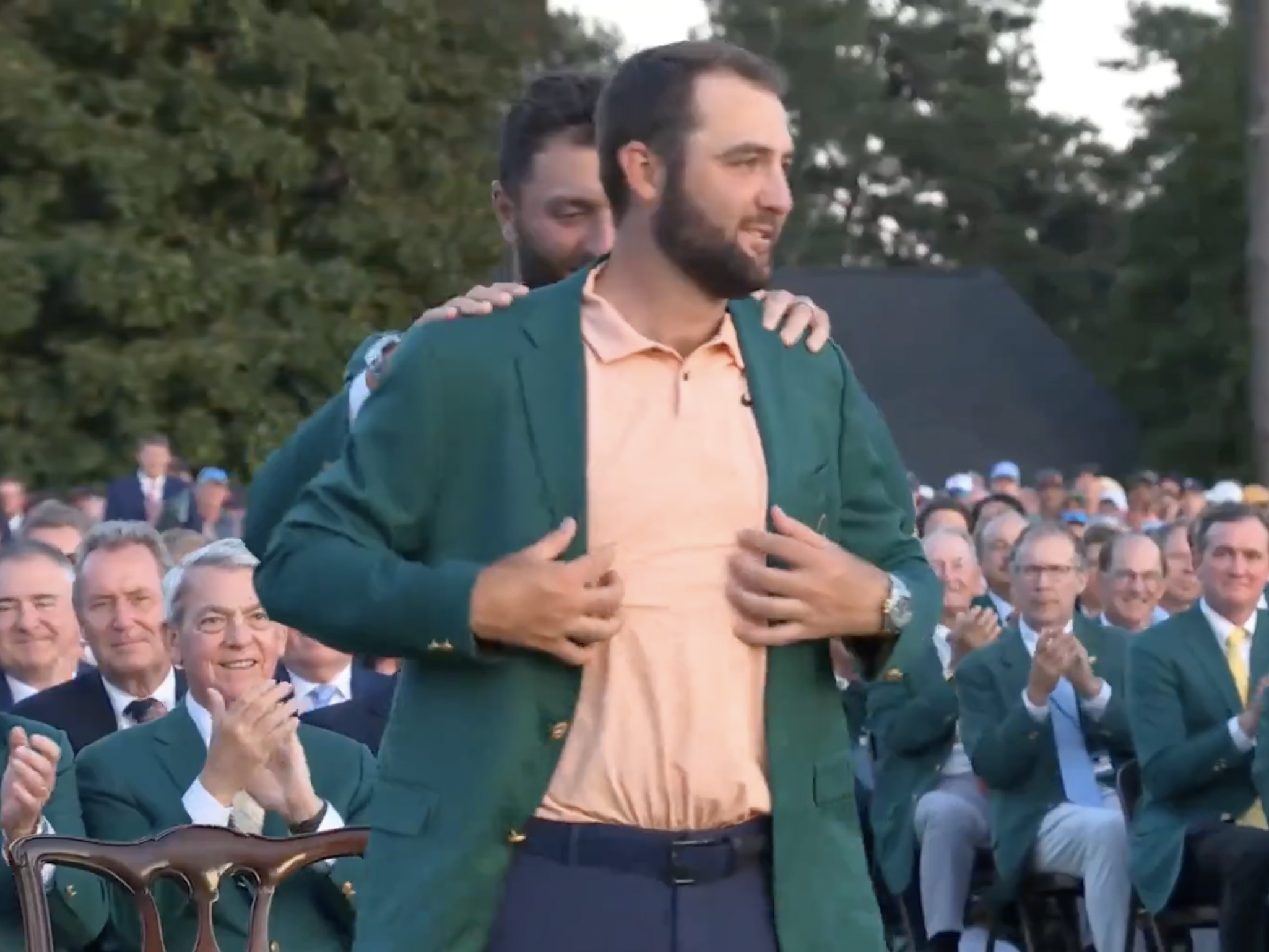
The 2024 Masters offered up plenty of excitement throughout the week with Scottie Scheffler delivering when it mattered to live up to his pre-tournament favorite tag. With the year’s opening major now in the books, here are my six biggest takeaways from the 2024 Masters.
Scheffler In a League of His Own
In the most impressive way possible, Scottie Scheffler won the Masters without having his absolute best stuff. For the week, Scottie ranked 19th in Strokes Gained: Approach, which is a category the number player in the world typically dusts the rest of the field in. After a strong approach day on Thursday, the 27-year-old lost strokes to the field on approach on Friday and Saturday, before gaining on Sunday. The iron performance was more than solid, but it was an all-around game that helped Scheffler get it done around Augusta National.
For a year or more, the narrative around Scheffler has been, “With his ball striking, if he can just putt to field average, he’ll be unbeatable.” At Augusta, his ball striking came back down to earth, but his touch around the greens and ability to manage the golf course demonstrated why he is the best player on the planet right now. For the week, Scheffler ranked 1st in the field in Strokes Gained: Around the Green and 24th in Strokes Gained: Putting.
For the time being, there is a major gap between Scottie Scheffler and the second-best player in the world, whoever that may be.
The Future is Now
Ludvig Aberg went into his first back-nine at the Masters with a legitimate shot to win the tournament. When he teed it up on the treacherous 11th hole, he was one behind Scottie Scheffler, who had just stuck one to a few feet on the 9th. By the time he approached his tee shot, which was perfectly striped down the left side of the fairway, he was two behind. Unfortunately, the 24-year-old got too aggressive with his approach at the 11th and found the water, making double bogey. Ludvig rebounded nicely and finished the event in solo second place.
With the Masters now in the rearview, it’s never been more evident that Ludvig Aberg is no longer an “up-and-comer” — he has arrived. The Swede has been an integral part of a winning European Ryder Cup team and has now contended at Augusta National. With a calm demeanor, a picture-perfect swing, and a build and stature that appears as if it was built in a lab, Ludvig Aberg is already amongst the world’s best. I’d be extremely surprised if he wasn’t in the mix at next month’s PGA Championship at Valhalla.
Nostalgia Wins
I try to avoid as many cliches as possible, but there’s something about the Masters that brings out the sentimentality in me. Tiger Woods strategically making his way around Augusta National without all of the physical tools that made him arguably the most dominant athlete in the history of sports will always be riveting, regardless of what score he shoots. Woods made it interesting until a tough stretch of holes on Saturday, but he ultimately wore down, shooting 16 over for the week in difficult conditions. It’s remarkable that the 15-time major champion was able to put together a few solid rounds of golf despite barely playing any competitive golf in 2024. As long as Woods tees it up at Augusta, we will all continue to be mesmerized by it.
Verne Lundquist’s 40th and final Masters Tournament was also a must-watch aspect of the event. The iconic voice of Lundquist and his calls throughout the years still give me chills each time I hear them. Verne is an icon of the game and will be missed in future renditions of the Masters.
The Masters also brings another element that is unique to the tournament. Former champions turn back the clock to battle with the golf course again which creates some amazing stories. There are a few that stick out this year and were an absolute pleasure to witness. 61-year-old Vijay Singh made the cut for the first time since 2018 and shot a pretty incredible even-par, 72 on Sunday. 58-year-old José María Olazábal made the cut as well, reminding us why fellow Spaniard Jon Rahm sought his valuable advice prior to his Masters victory in 2022.
Regardless of who wins, the Masters always delivers.
Bryson Moves the Needle
Plenty will disagree with me on this point, but outside of Tiger Woods, and potentially Rory McIlroy and Jordan Spieth, no one moves the needle in golf as much as Bryson DeChambeau. The uniqueness in which Bryson approaches the game has always been fascinating, and if he gets near the top of the leaderboard at any major championship, whether it’s to root for him or against him, people are interested.
It began on Monday with a pretty bizarre story of DeChambeau using 3D-printed irons that got just got cleared for use by the USGA when the week began. It once again felt like a storyline that would only be possible with a character as eccentric as Bryson. He then raced off to a first-round lead in tough conditions, reminding the world of what made him such a great golfer to begin with. He made some mistakes on the weekend, but still finished a career best T6 at The Masters.
Bryson is more than just quirky; he is a former U.S. Amateur Champion and U.S. Open who I believe will contend for more majors in the future. I will continue to root for DeChambeau, but I’m perfectly content with the fact that plenty will root against him, and I encourage those people to do so. That’s what makes it fun.
LIV Walks Away Empty-Handed
Last year, there were a multitude of questions about LIV players coming into the year’s first major. They had played very limited tournament golf, and critics of LIV questioned whether the 54-hole events were enough to sharpen the players enough to compete against the best in the world on the biggest stage.
The results were fascinating, with LIV players all over the leaderboard. Brooks Koepka held the 36- and 54-hole lead, with Phil Mickelson and Patrick Reed finishing T2 and T4, giving LIV three golfers in the top-4 of the leaderboard.
This season, with even more time removed and with some more massive additions to the roster, the intrigue surrounding LIV players at Augusta was once again palpable. While some players, including Bryson DeChambeau, exceeded expectations, I can’t help but walk away from the Masters feeling underwhelmed by the performance of the LIV players.
Brooks Koepka finished runner-up last season and is a certified major championship killer. The 5-time major champ was never involved and simply didn’t have it at Augusta. Dustin Johnson put together a putrid performance, shooting 13 over for his two rounds, making it fair to wonder if his days of contending at major championships are over as he rapidly approaches his 40th birthday.
Jon Rahm and Joaquin Niemann were both players who were amongst the favorites this week, but Rahm was faced with the daunting duties of defending champion and Niemann proved he was still not quite ready to master the quirks of Augusta National, bleeding strokes both around and on the greens.
To be fair, when all was said and done, LIV had four players in the top twelve at The Masters. Tyrrell Hatton stormed the leaderboard early on Sunday, finishing T9 and earning himself an invite back to Augusta next season. Cam Smith and Patrick Reed put together gritty performances, which isn’t too surprising considering the fact that they both absolutely love Augusta National, but neither ever felt a real threat to win. There’s no doubt the players on LIV are good, and that’s why some encouraging leaderboard positions aren’t enough. They needed to contend.
With no players part of the storyline on Sunday, I view the first major of the year as a disappointment for LIV. The players will head into next month’s PGA Championship at Valhalla with a lot to prove.
Rory’s Struggles Continues
Rory struggling at Augusta National is no surprise at this point. The four-time major champion has now had 10 attempts to complete the career grand slam and has never had a chance to win. His T2 in 2022 was deceiving, the Northern Irishman stormed the leaderboard on Sunday, but was never in contention, and never got within three shots of the winner, Scottie Scheffler.
I didn’t expect Rory to win, but I have to admit that this year felt a bit different. McIlroy played the week prior to the Masters, which he typically doesn’t do, and finished third at the Valero Texas Open. He gained 7.56 strokes on approach and 2.0 strokes off the tee, which told me that his visit with world-renowned swing coach, Butch Harmon, after the Players Championship paid dividends.
McIlroy also approached the media quite differently. He cut his pre-tournament press conference short after only 10 minutes and seemed to be laser-focused on just playing golf.
Despite the different approach to the Masters, the results were the same. McIlroy struggled over the course of the week, finishing T22 (+4) and never sniffed a decent weekend position on the leaderboard. It’s back to the drawing board for McIlroy, and I have doubts that he will ever figure it out at Augusta.
- LIKE51
- LEGIT9
- WOW4
- LOL1
- IDHT2
- FLOP2
- OB2
- SHANK7
19th Hole
Vincenzi: The 8 best prop bets for the 2024 Masters

We’ve finally reached The Masters and excitement is at an all-time high. The world of golf has been fractured for the better part of two years, but for a week at Augusta National, all of the outside noise will disappear. All of the best players in the world will be together seeking to make history.
In addition to betting on The Masters champion. This is one of the few weeks of the year where there are so many more markets to explore, with value to be had in plenty of different categories.
Throughout this article, I’ll discuss all of my favorite props and players for the 2024 Masters.
Placement Bets:
Tony Finau Top 5 +750 (DraftKings):
I badly wanted to include Tony Finau in my outright betting selections, but I simply ran out of room on my card. Additionally, it’s slightly difficult to see him hitting the putts necessary to win the Masters on back nine on Sunday. However, I do strongly believe he will play great golf this week at Augusta National.
In his past 24 rounds, Finau ranks 4th in Strokes Gained: Approach is always amongst the best drivers of the golf ball in the game. Back in 2019, Finau had a great chance to win The Masters. I expect him to be hanging around over the weekend once again in 2024.
Gary Woodland Top 20 +550 (DraftKings), Gary Woodland to make the cut -110 (DraftKings):
Last season, Gary Woodland had his best ever finish at The Masters in his eleven tries. The 39-year-old finished T14 and played incredibly steady across all four rounds.
In Woodland’s most recent start at the Texas Children’s Houston Open, he struck the ball incredibly well. He led the field in Strokes Gained: Approach (+8.8) and Strokes Gained: Ball Striking (+10.0).
Gary has been working with Butch Harmon and absolutely flushing the ball both in tournaments and during practice.
Woodland appears to be healthy once again and in a great place physically and mentally. If he can build off his impressive performance at Augusta last year, he can place inside the top ten in 2024.
Additionally, the make the cut number on Woodland seems generous considering the number of players who miss the cut will be relatively small this week. Woodland is striking it well enough to make the cut even if he’s hindered by a balky putter once again.
Thorbjorn Olesen Top 20 +400 (FanDuel):
The Thunder Bear, Thorbjorn Olesen, made his Masters debut in 2013 and finished an incredibly impressive T6 for the week. In the two additional starts he’s made at Augusta National since then, the Dane has continued to be incredibly solid, finishing T44 and T21.
This week, Olesen heads into the week playing some good golf. He gained 3.8 strokes on approach and 5.52 strokes around the green at last week’s Valero Texas Open on his way to a strong T14 finish. Back in January, he won the Ras Al Khaimah Championship on the DP World Tour.
Olesen has the skill set to be successful at Augusta and seems primed for a good performance this week.
Top Nationalities:
Sergio Garcia Top Spanish Player +280 (DraftKings):
I believe Sergio Garcia can get into contention this week with the way he’s striking the ball in addition to his good vibes with a refurbished version of the Scotty Cameron that he used at the 1999 PGA Championship at Medinah.
I am slightly concerned about the emotional letdown he may face after losing in a playoff at LIV Miami, but I believe a veteran and former Masters champion should be able to regroup and focus on an event far more meaningful.
This is essentially a tournament head-to-head with Jon Rahm at +280. While Rahm deserves to be respected this week, the history of the lack of success of defending champions at The Masters is difficult to ignore.
Joaquin Niemann Top South American Player -230 (FanDuel):
While I hate paying this much juice, I don’t see a world in which Joaquin Niemann isn’t the top South American this week at The Masters. Joaco comes in playing better golf than anyone in the world not named Scottie Scheffler and has a serious chance to win the green jacket.
He only needs to beat two players: Emiliano Grillo and Camilo Villegas.
Tournament Head-to-Heads:
Justin Thomas -110 over Collin Morikawa
JT isn’t having his best season but is playing a lot better than he is getting credit for at the moment. In the past three months, there are only six players on the PGA Tour who have averaged 1.7 Strokes Gained: Tee to Green or better. Justin Thomas (+1.7) is one of the six and is currently tied with Rory McIlroy (+1.7).
Morikawa, on the other hand, has been extremely poor with his irons, which is incredibly uncharacteristic for him. I can’t help but feel like something is completely off with the two-time major champion.
Tony Finau -110 over Wyndham Clark
I explained in the placement section why I’m so high on Tony Finau this week. With how well he’s striking the ball, it seems as if his floor is extremely high. I’m not sure if he can make the putts to win a green jacket but I believe he will be in the mix similarly to 2019 when Tiger Woods emerged from a crowded pack of contenders.
Clark is a debutant, and while some debutants have had success at The Masters, it certainly poses a challenge. I also don’t believe Augusta National suits Clark as well as some of the other major championship venues.
- LIKE9
- LEGIT5
- WOW3
- LOL0
- IDHT0
- FLOP0
- OB0
- SHANK3
-

 19th Hole1 week ago
19th Hole1 week agoDave Portnoy places monstrous outright bet for the 2024 Masters
-
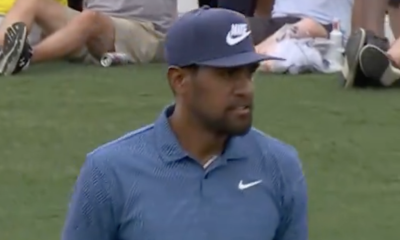
 19th Hole2 weeks ago
19th Hole2 weeks agoThings got heated at the Houston Open between Tony Finau and Alejandro Tosti. Here’s why
-

 19th Hole1 week ago
19th Hole1 week agoTiger Woods arrives at 2024 Masters equipped with a putter that may surprise you
-

 19th Hole2 weeks ago
19th Hole2 weeks agoReport: Tiger Woods has ‘eliminated sex’ in preparation for the 2024 Masters
-

 19th Hole3 days ago
19th Hole3 days agoTwo star names reportedly blanked Jon Rahm all week at the Masters
-

 19th Hole2 days ago
19th Hole2 days agoNeal Shipley presser ends in awkward fashion after reporter claims Tiger handed him note on 8th fairway
-

 19th Hole2 weeks ago
19th Hole2 weeks agoAddiction, spinal fusion, and scam artists – Everything Anthony Kim revealed in candid interview with David Feherty
-

 19th Hole2 weeks ago
19th Hole2 weeks agoAnthony Kim says doctors told him that he ‘may not have much time left’ ahead of LIV return



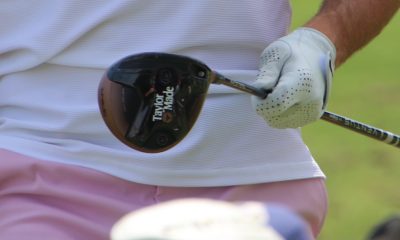

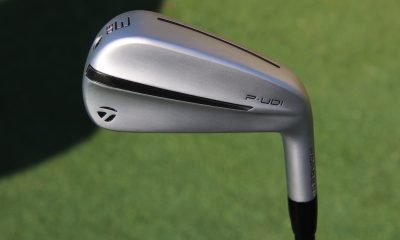



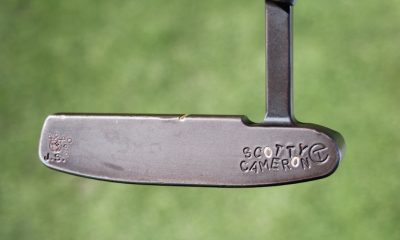

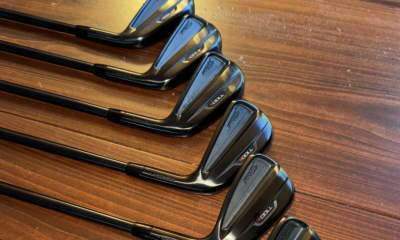









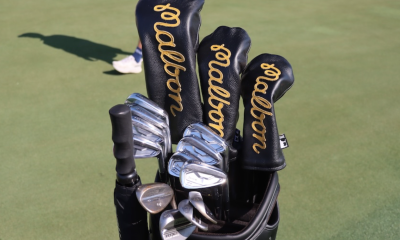

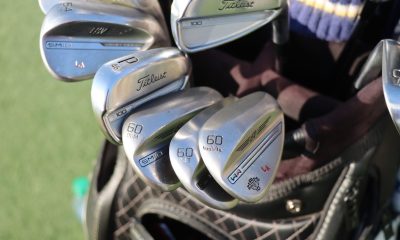

Pingback: The Wedge Guy: 3 surefire ways to never get better at golf – GolfWRX
Pingback: The Wedge Guy: My top 5 practice tips – GolfWRX
geohogan
Sep 15, 2023 at 12:59 pm
As important as loft angle IMO is lie angle
With every iron sitting squarely on the ground, the butt end of every club should be the same height from the ground. Ref. George Knudson
ie lie angles perfectly matched in the set.
All that is required is a bending bar to adjust those clubs out of lie angle sync.
14:15 … “butt end of every club is the same distance from the ground”
https://www.youtube.com/watch?v=4-j5fOfsxqo
Pingback: The Wedge Guy - Anyone can become a better wedge player if they follow these simple steps - Fly Pin High
Pingback: The Wedge Guy: Anyone can be a better wedge player by doing these simple things – GolfWRX
Bob Pegram
Sep 2, 2023 at 3:05 pm
I used to work for a big box golf store. A couple of the “fitters” were new (being trained) and should have not been doing fittings. I had previously worked for a Top 100 rated custom clubfitter who trained me. These new “fitters” would sometimes ask me questions that showed they didn’t have enough knowledge to be in that position. One didn’t even understand the idea of bend point of the shaft and how that affected shots nor how a shorter length club will flex somewhat less than if the same shaft were in a longer club. (In general, a lower bend point will hit the ball higher with somewhat more spin. However, there are exceptions/variations which is why the launch monitors are so helpful.)
Matts
Aug 7, 2023 at 10:37 am
Most golfers need several different fittings: driver, fairway wood, hybrid, irons and wedges. These fittings also need to identify at what specific clubs the various transitions need to happen.
M Pearson
Aug 4, 2023 at 3:57 pm
Have only done a couple manufacturer-specific fittings and, as someone who plays ~+3/4″ shafts and between midsize + a wrap of tape and oversize grips, was left disappointed given that the availability of shafts over standard length is minimal and shafts with grips over standard is minimal or zero. Good luck finding both in the same shaft, much less multiple shafts for the sake of comparison.
I would love to see manufacturers offer demos for a fee. I would gladly pay for a couple weeks use of three or four 7 irons with the specs I’m looking for with even midsize grips. This would also eliminate the issue that average to strong amateurs arent going to swing or hit the ball the same every day–i.e. a club/setup you like one day you may not like as much 2 days later, or even more likely, if you really like a specific club/setup, it could very well be you just happen to be putting a couple decent swings on the ball.
Max
Jul 30, 2023 at 12:03 am
How did I ever learn to play golf and eventually break par with the blades and woods my dad bought for me from the pro shop when I was 14? All this technology, but the game is still hard and requires practice.
Jeff
Jul 29, 2023 at 10:38 pm
Who here wants to hit it shorte
r? I certainly dont want to. If you do, go to the back tees!!
Matts
Jul 29, 2023 at 3:40 am
So if you are fitted correctly (6 or 7 iron), and purchase the fitted set of irons (4 iron through PW) and the gapping is very uneven, how is this a good fitting? The other six irons need to be fitted for correct gapping by means of tweaking the lofts if possible.
Jeff
Jul 29, 2023 at 10:14 pm
Why would the gapping be uneven?
Jim
Jul 30, 2023 at 8:58 am
Strength and ability to hold proper launch angles. Many people hit the 4 and 5 and sometimes even the 6 the same distance. Each iron needs to be set to the players needs.
Jeff
Jul 30, 2023 at 7:18 pm
If you hit your #4 iron, #5 iron, and #6 iron similar distances. Homestly, you don’t need a fitting. You should invest in a lesson
Prime21
Jul 27, 2023 at 12:15 pm
WHO uses 6 irons anymore? Asking for a friend. Also, YOUR requirements should ALWAYS be expressed. Communication is a two way street. While I agree that a fitter should have asked you better questions & gotten better information from you, you must also own the fact that YOU have a role in this “problem”. Fitting has improved greatly throughout the years, BUT it can always be better! KEEP STRIVING FOR GREATNESS!
Mike
Jul 27, 2023 at 11:38 am
I once went to a big box store iron fitting where in order for me to test an iron, they had to take a new one from a set & (heavily) tape it up. So the shotlink data was meaningless.
Also went to a club champion fitting on a super cold day & never really got warmed up. The fitter kept pushing me towards more ‘player’ irons w/ a senior shaft. Totally out of my profile on both counts! He was actually surprised that I didn’t drop $2,000 on the iron set!
Ironically, many of the clubs in my bag that I hit well (irons, 3W, TM mini-driver) I did not get fit for.
Dirty-d
Jul 27, 2023 at 8:32 am
That’s too bad. I’ve had great iron experience at MK golf in San Antonio, always fit me off the 7i and tweak lie angle and loft to meet my needs as well. Always tried lots of brands. And always free repairs I am very loyal to that company due to their customer service and performance
Terry Koehler
Jul 27, 2023 at 11:35 am
I know the guys at MK Golf. Great set-up and honest dealings.
Craig
Jul 27, 2023 at 3:58 am
Unless you can get a proper full back tour experience fitting, if you have a good idea of your specs then fitting is mostly a waste of time.
Jeff
Jul 29, 2023 at 10:21 pm
Having traveled the tour for over 35 yrs and visited indepented ckub fitters over the years. Your statement is 100% wrong! I do suggest, you go see your local PGA professional for lessons!!
Dan Bates
Jul 27, 2023 at 12:14 am
The big name fitters have turned into churn and burn companies owned by pe firms. I’m an avid decent slightly under scratch player. I’m not a gear head but no what I want. For the ridiculous prices at txg or club champ fitting with only a 6 iron is nuts. Should be much more in depth. Same goes with drivers. Shaft adapters they use screw with swingweight and flex. To me there’s gotta be a better way to fit all clubs.
Jeff
Jul 26, 2023 at 11:50 pm
With all your club knowledge. Maybe you should have asked the fitters about lie angle!! The fitters I have been to, we discuss lie angle. Sounds like you set the fitters up and were looking for something to put in your article.
Terry Koehler
Jul 27, 2023 at 11:36 am
No, my goal was to see how various entities approach fitting . . .
Jeff
Jul 29, 2023 at 9:47 pm
Its works both ways. The more questions you ask, the better the fitting becomes. Information in,information out.
Jeff
Jul 29, 2023 at 10:25 pm
So, how many club fitters did you visit?
Paul
Jul 27, 2023 at 7:57 pm
I think you missed the point. I’m a former professional and at my local stores they just let me go and fit myself but he wanted to see what the average guy off the street would get.
Jeff
Jul 26, 2023 at 11:38 pm
There is no logic to club fitting. How about no logic to putting the loft on an iron head versus the iron number! Who would do that???
Terry Koehler
Jul 27, 2023 at 11:34 am
Hello, Jeff.
The “logic” of putting the loft numbers on irons, as we did with the Ben Hogan FT. Worth 15 irons, was to bring a measure of precision to irons. We’ve purchased our wedges by loft for decades, because that is a precise way to know what you have. Drivers, fairways and hybrids are almost all sold with the loft number clearly indicated. So why wouldn’t you want that same level of clear precision throughout your set? Because the number on irons has no finite value as to loft, golfers really don’t know what they are getting. And the continued “jacking” of lofts has removed all meaning from the relative numbers on the sole.
Whatever Terry
Jul 28, 2023 at 7:16 pm
The numbers on the sole never mattered. As long as your 5 iron goes further than you 6, and your 6 does further than your 7, etc. who cares what the loft is? Saying that the number on the sole only matters when it’s a certain loft is a jaded, old-head, boomer perspective. “Back in my day,” ?
Jeff
Jul 29, 2023 at 9:37 pm
So how did that work out for the company??
Jeff
Aug 1, 2023 at 8:06 pm
Terry, how did that “logic” work?
OG Minkler
Jul 26, 2023 at 9:07 pm
I think custom fitting is mostly overrated. I had similar trackman experience, it said my best 6 iron was 147 yds. I hit a 6 iron 165 at sea level in California mild temps. I did my homework on irons and shafts beforehand so I knew what i wanted going in. I walked away ordering that exact makeup. If you’re a club junkie and know your game a custom fitting is not 100% necessary in my opinion.
Jeff
Jul 26, 2023 at 11:42 pm
I guess no need for tour vans. Let the pros do their homework abd figure out what they need
Laker
Jul 26, 2023 at 7:38 pm
Try getting a midsize grip … I’m amazed a better effort is not made by the majority of fitters
Jay Arr
Jul 26, 2023 at 5:00 pm
Personally, I think the so-called “Brand Agnostic” fitting places are a big scam… I’ve been to TXG and it was useless.
Ping and PXG do a pretty decent job of getting you into heads and shafts that will better your game, both use 7i, not 6i to fit.
I pretty much agree with 95% of what you wrote.
T
Jul 27, 2023 at 2:21 am
The problem with those brand agnostic places is, in order to use all heads for all shafts and frequency match build the heads to those shafts they have to bore out taper tips for parallels in order to do those builds and hope they can match the weights all across and fit the shafts. I don’t want my Mizuno taper heads bored out and parallel shafts put in, I don’t care what anybody says, I know what I feel and I can feel the difference
geohogan
Aug 4, 2023 at 1:19 pm
@T… totally agree taper tip is the only method to know that the club head hosel and the shaft are concentric. Parallel tip shafts into a parallel bored hosel can be out of concentricity by many hundred of inch and differ club to club.
IMO, once 5 iron became longer than 38 inches, close to 39 inches, 6 iron and up became more difficult to swing for most and using a shorter shaft in the irons is problematic because the head weights and SW are set for the longer shaft.
Big Guy
Jul 26, 2023 at 4:46 pm
Dunno if I agree with this.
If a player can be fitted correctly for a 6 iron, which is one of the longer irons they will carry therefore one of the more difficult to hit, then it stands to reason the the shorter irons will also fit better.
Loft jacking is a result of the top end of the bag equally going longer and to create correct gapping, the irons also needed to be strengthened. This naturally creates a gap in the wedges which an A wedge helps to fill.
I want to know that a new iron set improves my chances of consistent success and a correct gapping.
L
Jul 26, 2023 at 8:06 pm
You’re only allowed 14 clubs in the bag so it doesn’t matter what the loft label is on the iron once it’s in the bag.
But it is a problem when fitting clubs are mostly just the 6 iron.
That’s the whole point of this article. There is no “filling in” of a gap when you’re only allowed 14 clubs so it doesn’t matter what the label is
Whine.e
Jul 26, 2023 at 3:24 pm
Then provide alternative and create a market. Youre articles are just more and more sounding jilted. I know better blah blah blah.
PJ
Jul 26, 2023 at 3:05 pm
When I went to my local nationally known club fitter they had an obvious brand bias. When they had me hit my 6 iron, and then had me hit several other brand 6 irons, the fitter pointed out how much farther the new 6 iron traveled. I pointed out that the newer irons have less loft than mine so they will all go farther. He had no answer.
Then we did wedges and there was an obvious bias as to the brands that I had to test. What was worse is after spending the money for a full bag fitting, the guy says he would throw in the driver fitting for free. I told him “I already paid for that”. He didn’t know what to say.
If you get fit make sure you tell them you are going to try EVERY brand. If they have you hit irons ask them what the loft is, and if it is less loft than yours hit the other brand 7 irons and compare that to your 6 iron. It eliminates the BS.
Chris M
Jul 26, 2023 at 1:59 pm
I will say I just did a PXG fitting and they have at least moved to a 7i for fittings. I had always used 6i on previous fittings so that was a welcome change.
PPP lol
Jul 26, 2023 at 3:38 pm
Pings have always been 7 iron, which is why PXG is a 7, because all the Ping guys went to PXG is why all PXG looks like Pings
Garrett
Jul 26, 2023 at 1:06 pm
I tend to think sole design, leading edge, and lie angle, all of which affect turf interaction, are the most important parts of iron head fitting and need to be done on grass.
D
Jul 26, 2023 at 3:39 pm
Which is why they don’t, because 90% of people who get fit can’t hit the damned ball properly to save their lives, which is also why and how these fitters make money and exist to sell stuff lol
Jeff
Aug 1, 2023 at 8:29 pm
Garrett, good point!!!
Bob
Jul 26, 2023 at 12:04 pm
The first time I saw a lie board was with the Ping ISI fitting in about 1996. That was a logical first step and widely adopted now. Much better than their fingertip-to-floor method that didn’t take into account toe drop.
Not sure what the point is here.
James
Jul 26, 2023 at 11:38 am
Nice write up, however, what do you propose?
Jim T
Jul 29, 2023 at 10:12 am
Exactly! Good description of the problem but what’s the solution? Fit the 7-iron? Fit all the irons? We know that ain’t gonna happen.
D Gillis
Jul 26, 2023 at 11:33 am
Ever notice the difference in lengths on standard irons!? Ridiculous!
No wonder no one is improving. BUT my 8 iron now goes 190!
Bob
Jul 26, 2023 at 12:11 pm
Not sure who the first snakeoil salesman was to start jacking lofts, but it started an ugly trend. Like currency inflation.
In Christianity, they call that fornicating with the moneychangers.
Robert Thompson
Jul 26, 2023 at 5:16 pm
Cobra was the first guilty party when it came to loft jacking. It didn’t take long for everyone else to follow suit.
Jeff
Jul 31, 2023 at 8:46 pm
And explain why that is so wrong?
D Gillis
Jul 26, 2023 at 6:08 pm
Well done!
Aaron
Jul 26, 2023 at 10:54 am
Was there any consistency to the length and lie of your irons at each of the fittings? Did anyone have you +1/2” while another had you at -1/2”…etc?
Andrew
Jul 26, 2023 at 10:49 am
Mr. Koehler, being a long time reader of your articles and major fan of your work. I couldn’t agree with you more. This industry is centered on sales and that’s one of the main reasons the average score remains the same, even after all the technology. Although I fear it will never change. It’s great to hear you fighting along side us. Thanks again for another great article.
Jon
Jul 26, 2023 at 10:35 am
This is why I assemble my own irons with components from GolfWorks. It seems more and more all the fitters are worried about is selling distance. The predominate mistake is with the shafts that are being suggested are too light in weight.
Approved
Jul 26, 2023 at 10:33 am
Hear, Hear!
O
Jul 26, 2023 at 10:28 am
Because they’re just sales people. They’re there to sell, no matter what. And the old adage of the used car salesmen fit nicely.
And they have incentive to sell certain ones for more of a cut, so they suggest those than the one you actually want
Kingsley
Jul 26, 2023 at 4:06 pm
Absolutely not true, at least in regards to tech reps from major companies. Tech reps take care of the majority of fittings and do not receive any incentive on sales. Your comment is obtuse and uninformed.
Dong
Jul 26, 2023 at 8:09 pm
Ever been to Club Champion? True Spec? No? Well then lol
Can’t debate truthful and experiential observations based on fact
Kingsley
Jul 27, 2023 at 8:34 am
I said tech reps for large companies (Callaway, Titleist, Ping, Taylormade, etc). Companies like Club Champion and Tour Spec (and in house fitters at clubs) are usually partially compensated on sales. We can have a meaningful conversation once your ability to read accurately improves.
Ding
Jul 27, 2023 at 2:54 pm
Actually, your comprehension verges on kindergarten, since, the original commenter didn’t mention big box or large label manufacturers, the dude was pointing out the fact that they are, in principle, SALESPEOPLE – so stick to that and not reach or add your own opinion on something he didn’t mention, doof lol
geohogan
Jul 26, 2023 at 5:11 pm
Nothing happens in the world unless stuff is sold.
No only is your comment demeaning to used car salespersons but
sales in general.
A dentist tried to up sell me to a bridge or implant when a filling
was all that was required.
D Gillis
Jul 27, 2023 at 2:19 pm
Does this offend you as a Dentist!?
D Gillis
Jul 27, 2023 at 2:20 pm
Or a used car salesman??
rebfan73
Jul 26, 2023 at 10:41 pm
I’m a custom fitter for a major OEM company. When at a fitting, I go out of my way to tell people that I’m a fitter, NOT a salesman. My pay is not commission
based. If I do my job correctly, my customer will hopefully walk away pleased and with the knowledge that they’re playing the best club for them, wether it’s their own or ours. Sometimes I can do better for the player, other times I can’t. And the OEM I work for uses a 7 iron, not a 6. I don’t think 6 irons have been used for some time, so I question the validity of your article….
Dan
Jul 27, 2023 at 7:44 am
Thanks for chiming in. I agree with your comment. As a consumer golfer, frame of mind has become a focal point. Getting a set of irons per a fitting recommendation is most helpful. After that, well, a consumer golfer has to practice to get the better results desired using his more tailored equipment. This article unveils some weaknesses in the fitting approaches taken, yet, similar to the fitting approach described in the article, fails to present a more impact full form of a fitting style and process.
G
Jul 27, 2023 at 2:57 pm
Well duh, that’s because you’re getting a salary, duh, everybody knows that, BUT you are getting a commission of around 2% for the sales of the goods, so don’t be disingenuous, sheesh. So great, you’re a fitter, but let’s just pretend you don’t sell anything for the year – what will your bosses think of you then? Exactly. You’re a salesperson. Get real
Wayne Walters
Aug 17, 2023 at 6:17 am
I was fitted early 2021 at a national name brand company. The fitter used 6-irons across different brands. Ultimately it was a chase to see what got the best numbers in terms of distance. I ended up with irons with shafts that are too light, and too upright, for $2k out the door. I play better currently with my 1994 MP-14s with 130 gram stiff shafts that I bought at a yard sale for $100.
PigB
Jul 27, 2023 at 9:19 am
This has been my experience every time, including tech reps! I feel all of my fittings have been hall-assed with a hard sell at the end.